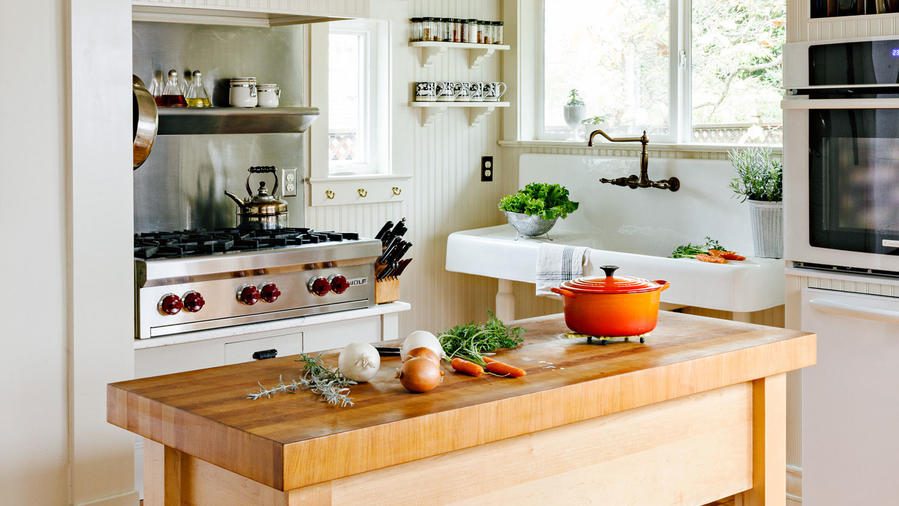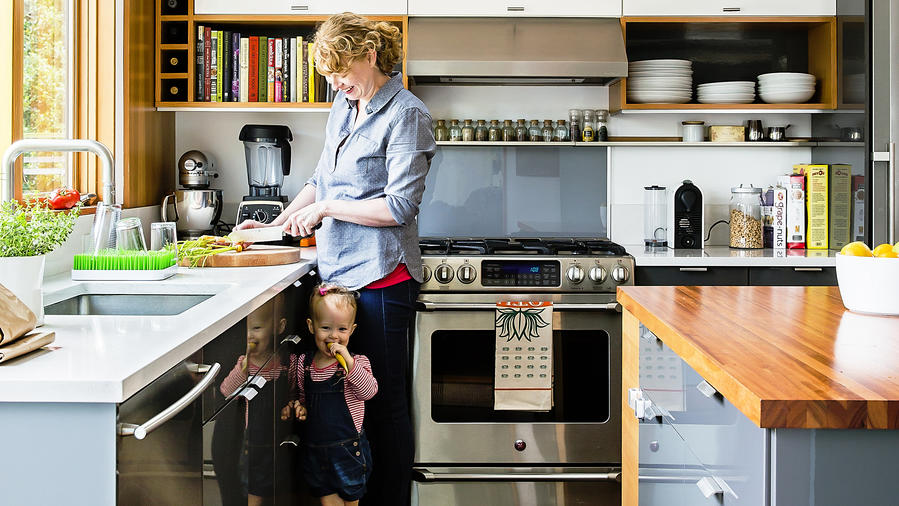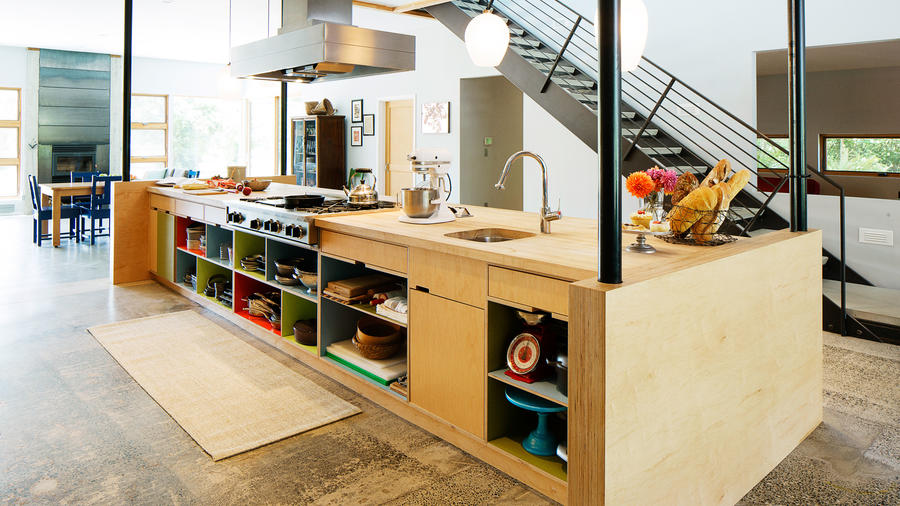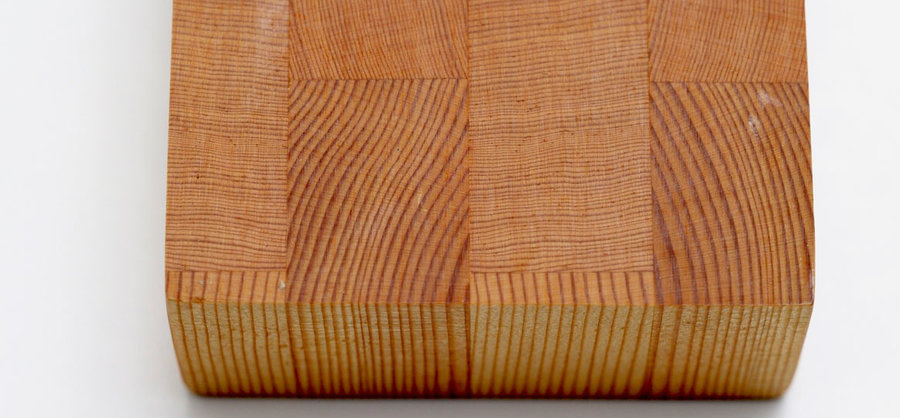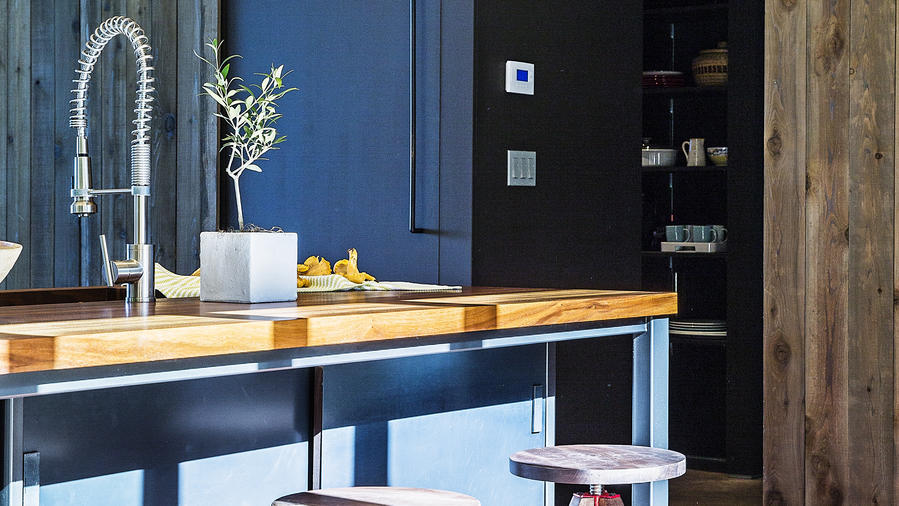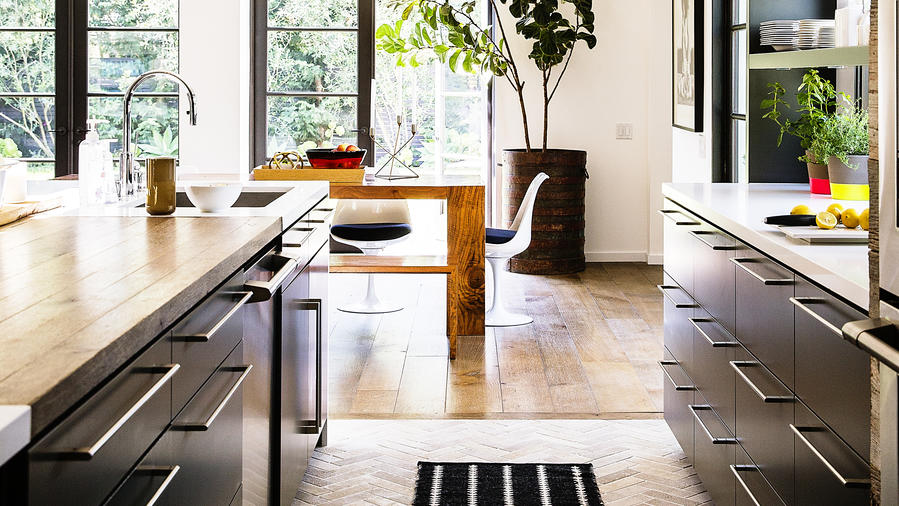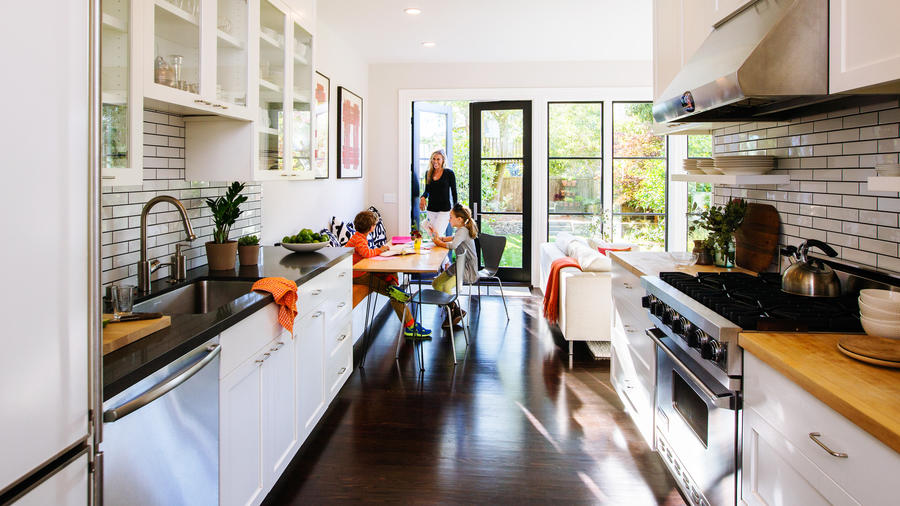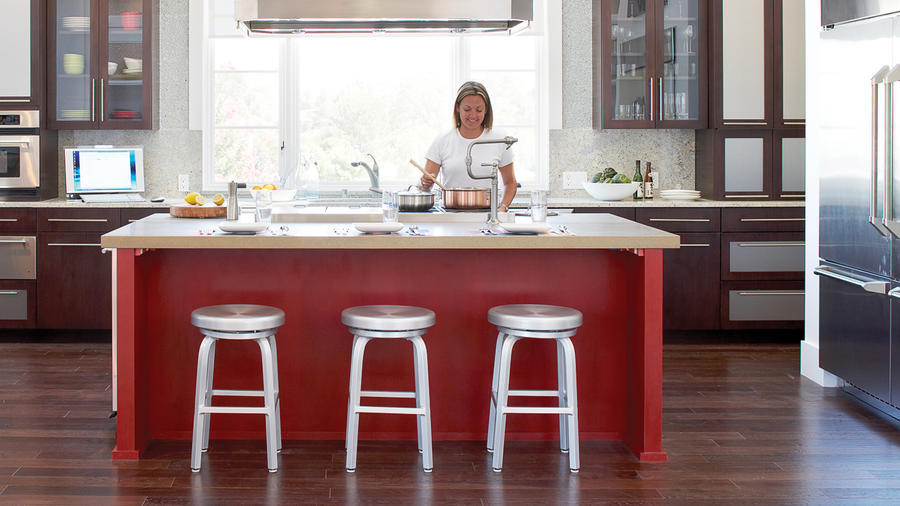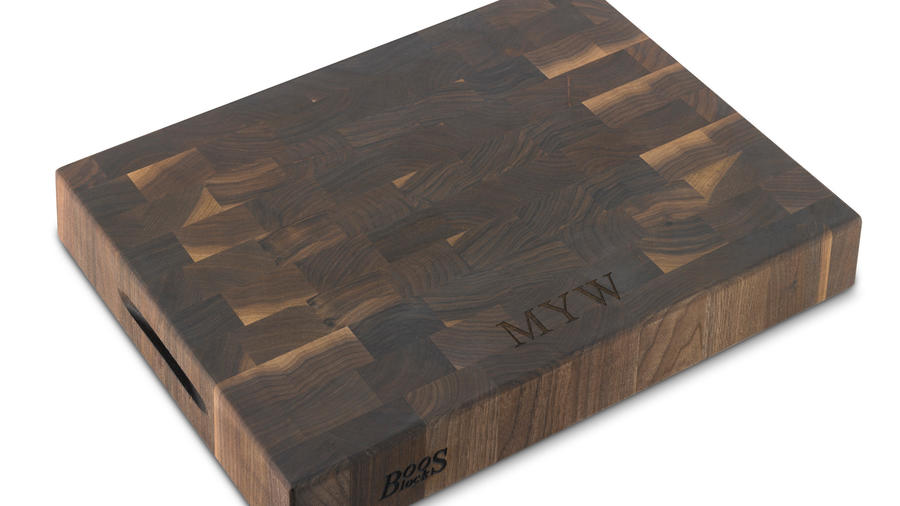Photo by Lincoln Barbour; written by Paige Porter Fischer
It’s Easily Repaired
Butcher block—thick strips of hardwood glued together with a food-safe adhesive—have two advantages over other countertop materials. First, you can chop and prep food directly on the surface. It will show nicks and stains over time, but that’s all right, because the second advantage is that you can sand away imperfections and reseal or re-oil butcher block yourself. With a little elbow grease, it will look like new and can last decades. One caveat: Butcher block is porous, so it’s not usually recommended for the area around a sink to avoid the risk of mold growth and rotting.
Thomas J. Story
There’s More Than Maple
Maple is the most common wood species for butcher block because it’s relatively inexpensive, durable, and widely available. But almost any hardwood can get the treatment: cherry, oak, beech, birch, tigerwood, and walnut are other great options. Remember that some wood species, such as maple and cherry, will darken over time, while others, like walnut, lighten.
John Clark
It’s Sustainable
Want to be eco-friendly with your kitchen remodel? Butcher block is a good choice as long as the wood source is Forest Stewardship Council (FSC) certified. Or, choose a quick-growing material like bamboo. It’s always a good idea to ask the manufacturer about their environmental practices. If they don’t have a ready answer that includes reputable certification, choose a different vendor.
It Comes in Two Styles
You’ve probably noticed two distinct butcher block styles. Long strips laid lengthwise are called “edge grain.” When the wood is cut widthwise and laid like a checkerboard it’s called “end grain” (pictured). End grain is a more common style for cutting boards, but is also appropriate for countertops.
Thomas J. Story
It’s Inexpensive
Marble and quartz countertops might be elegant, but they come at an eyebrow-raising cost: $100-250 per square foot. Butcher block, in comparison, is typically $35-200 per square foot, depending on the wood species used. The majority of options are on the lower end of that price scale. So go ahead, use the extra cash to splurge on an espresso machine!
Thomas J. Story
There’s a Secret to a Great Install
Butcher block can expand and contract with dramatic changes in temperature, causing warping over time. Good ventilation prevents this long-term, but there’s something you should do before the countertop is installed: Let it sit in your house for at least a week to give it time to acclimatize to your home’s humidity.
Thomas J. Story
It Goes with Anything
There is no kitchen style that butcher block wouldn’t be at home in. It warms up modern kitchens, and brings streamlined practicality to even the most ornate traditional one. The only style no-no is matching cabinets with the countertop. The finishes should contrast (think: navy cabinets and a maple top) for the most pleasing effect.
Thomas J. Story
Cleanup Is Easy
Butcher block has a reputation for being finicky about how it’s kept clean. That’s not actually true–daily care for butcher block is essentially the same as any other countertop. After each use, wipe down the butcher block with mild soap (such as castile) and warm water. Make sure it’s thoroughly dry before placing anything on the surface.
Thomas J. Story
It’s Easy to Make Look Like New
Well-cared-for butcher block can actually self-heal from minor knife nicks. So to keep butcher block at its most impervious and looking its best, liberally apply mineral, “bee’s oil” (a mix of mineral oil and beeswax), or another food-safe oil to the surface once a month, wiping up any excess. If larger nicks, burns, or stains take over, sand the surface with a hand-sander, then re-oil up to four or five times. The butcher block will be like new.
It’s More Than a Countertop
Not in the middle of a kitchen remodel? Get the warmth and utility of butcher block with a cutting board. This workhorse can withstand some serious chopping (remember, butcher blocks originated with, well, butchers) and will last a lifetime with the same cleaning and care as a butcher block countertop.
